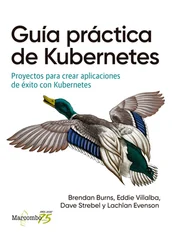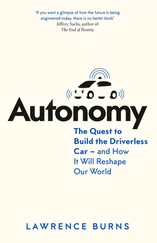Since then, Whittaker had specialized in building robots designed to work in harsh environments. One of his creations explored volcanic craters. Another mantis-like contraption built structures in space. Still another, created with a team that included the German software wizard Sebastian Thrun, crawled through the darkness of long-abandoned mines, mapping their interior passageways. Urmson had worked with Whittaker to develop computer algorithms designed to increase the speed at which robots were able to travel autonomously.
When Urmson returned from the Atacama Desert, he had a tough conversation with his wife, Jennifer. Urmson wanted to set aside the completion of his PhD for a time and pursue the DARPA race with Whittaker. The DARPA Grand Challenge was the talk of their academic specialty. DARPA had figured it might be lucky to get twenty entries. Eventually, 106 teams would enter. Urmson felt he had no choice but to join. Who knew what sort of fascinating epiphanies would emerge from the project? Who knew what Urmson would miss if he didn’t take part?
Urmson convinced Jennifer to let him do one race. The couple would put off having kids until Urmson was done. But then fate threw them a slider: It turned out Jennifer was already pregnant. The news added to the pressure Urmson felt to win. After all, it was the best way to ensure he’d get a high-paying job, once he finished.

To attract a team, Red Whittaker put up posters all around the Carnegie Mellon campus advertising an unconventional, graduate-level seminar class, Mobile Robot Development. It was pass or fail, and it featured only one assignment: to build a robot that would win the first DARPA Grand Challenge. He also sent out email blasts to potential sponsors and volunteers, which featured his trademark bravado: “The race defies prevailing technology, and many hold that the challenge prize is unwinnable in our time.”
Whittaker staged the first meeting of the team in a Carnegie Mellon seminar room on April 30, 2003, according to Wayt Gibbs, a reporter the magazine Scientific American embedded in Pittsburgh. “Welcome to the first meeting of the Red Team,” Whittaker began. “I am committed to leading this team to victory in Las Vegas next year.”
The men and women in the room were about as motley a crew as it was possible to put together in Pittsburgh tech circles. Bob Bittner was a former combat engineer who’d spent six years in a submarine. Spencer Spiker was a retired helicopter test pilot, a West Point–educated mechanical engineer who led two hundred people as a company commander in the U.S. Army, and who had left the service to spend more time with his family—then found himself jobless in a severe recession. He joined Red’s team because he had nothing better to do, then worked himself into a full-time staff position. Michael Clark was a NASA engineer who used a wheelchair to get around; having fallen on hard times, he lived for a spell out of his van. Lots of people had seen Red’s poster, apparently, and lots of people were inspired to work on the project it advertised. “I don’t know anything about computers—but I’d like to volunteer,” said Mickey Struthers, a postman who showed up to the first class because he wanted to participate in a historic science project.
“You’ve got a warm body”—Whittaker grinned, shaking Mickey’s hand—“and we need warm bodies.”
They began their efforts brainstorming what sort of a vehicle they would use. DARPA had announced the course would be designed by Sal Fish, the operator of such tough off-road races as the Baja 1000. Red Team figured it would have to be prepared for a course that would wind through dry river gulches, box canyons, mountain ridges, rocks, sagebrush and cliffs. So the robot they designed had to be able to either get around such land features or drive over them.
No idea was too outrageous to be considered. One of the first suggestions was a giant tricycle that had wheels seven feet in diameter. The team discussed using a Chenoweth combat dune buggy, a low-slung contraption on four fat tires favored by mercenaries and warlords. Other brainstorming options included construction equipment, an all-terrain vehicle and a tank. But the team ultimately opted for pragmatism. After all, Whittaker figured the budget to develop the robot would be around $3.5 million. Labor aside, $725,000 of that entailed the cost of the products required to build the vehicle. Whittaker was crisscrossing the country to find sponsors. Intel, Boeing and Caterpillar all kicked in some money. Google, which everyone thought of as a search engine company at this point, sponsored Red Team to the tune of $100,000 after Whittaker visited its headquarters in Mountain View, California, and met both Larry Page and Sergey Brin. But such funds wouldn’t go far when you were trying to build the fastest-ever robot car. Red had bought a cattle ranch a couple of hours east of Pittsburgh in the early nineties because he felt his academic life was too sedentary and sought physical activity that worked his muscles, not his mind. In September 2003, with the March 2004 race date fast approaching, Whittaker finally bought the vehicle that would become their robot from another farmer in the area.
Some in the class were astonished when they saw it. Shouldn’t a self-driving car look cool, and polished and, um, high-tech? The vehicle Red had procured was the opposite of high-tech. It was a High Mobility Multipurpose Wheeled Vehicle M998: a Humvee, battered by time. It was seventeen years old. No one had any idea how many miles it had, because the vehicle didn’t have an odometer. Nevertheless, the price was right: $18,000. The key thing was, it worked.

Whittaker was under a lot of pressure. Around the country, dozens of robotics enthusiasts were working to create entries for the challenge; so many, in fact, that DARPA was requiring everyone to submit a detailed and academically rigorous declaration of the approach they planned to take. The step was intended to limit the race entrants to serious competitors. There were high school students and bored mid-career engineers. Several were former contestants on the mechanical-gladiator game show, BattleBots, which featured remote-controlled robots fighting to the death, or at least, deactivation. Regardless of where they came from, the competitors all seemed to have one goal in mind: Beat Red Whittaker’s team. Why was the CMU team in so many other people’s sights? Whittaker’s team was the biggest, with thirty members. It was one of the best funded. And many also believed that it was DARPA’s hoped-for winner.
Red’s leadership style was to take a bunch of people, introduce the problem to them, set ambitious and clearly defined goals that reflected progress toward the solution—and then get out of the way. He’d drop in regularly to check in and apply pressure on his charges. Such visits could be intense. According to a Wired article, Whittaker once drew an analogy between developing robots and the labor required to construct the enormous historic monuments around the Nile. “If you’re in Egypt building the pyramids, you’ve got to have slaves,” he said. The implication? Whittaker’s students were his slaves. One of Red’s longtime students, Kevin Peterson, who would become Red Team’s software lead, had attended Princeton High School, where he encountered Dr. Anthony Biancosino, the domineering music teacher on whom Damien Chazelle loosely based the bandleader in the 2015 movie Whiplash . Peterson responded to Whittaker’s style, he says, in part because he’d already been through his experiences at Princeton with “Dr. B.” “There was an ethos around both of them of being larger than life and somewhat mysterious,” Peterson recalled. “The idea that you need to work hard to be part of their exclusive team if you want to join them. They’re both up to big things and you need to be a badass to be on the team. Funny thing is, both of them would accept and build anyone who had that level of dedication. It’s more about hard work than initial skill.” One of Whittaker’s favorite motivational anecdotes placed his charges in the roles of the Inuit in the Arctic, who had to decide which strategy to use when seeking out food. Are you going to go out and try to find a few berries and bits of lichen? Whittaker would ask his team. Or are you going to find and kill the walrus that feeds the whole village?
Читать дальше













